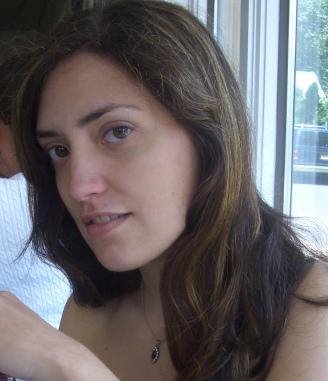Knowing when to fold 'em
Science news reports that a team based at U.Penn. School of Medicine has found some common ground between Lou Gehrig's disease and a specific kind of dementia. Their results have pinpointed a known protein, TDP-43, as a culprit for the disease, and their work may instigate a reevaluation about how these diseases are studied, in addition to highlighting a potential drug target. TDP-43 is a major player in the signature "clumps" that develop in different locations of the brain during these neurodegenerative illnesses.
Background info: Clumps in brain tissue are generally not good. The place where clumps end up seems to determine which disease will affect a patient. Frontotemporal lobar degeneration is the #2 cause of dementia after Alzheimer's in people under 65. In that case, the clumps hang out in the part of the brain that controls good judgement and good behavior. With Lou Gehrig's disease (aka amyotrophic lateral sclerosis), the problem might be closer to the section controlling motions.
The ref:Science 2006, 314, 130-133.
I guess hindsight must be 20/20 for this research team, because in the past doctors have sometimes seen patients with Lou Gehrig's disease develop this type of dementia, and vice-versa.
Again: The important take-home message is that the final folded state of proteins in the brain is crucial. Proteins usually start out as a chain of amino acids and eventually fold up into an orderly structure. If a protein doesn't fold correctly, chances are it's not going to function correctly, either. This is a theme that happens over and over again, in Alzheimer's, mad cow disease, you name it. What comes to mind for me are all those origami fortune-tellers and paper footballs I folded as a kid. You needed to fold it just right to get a good game of cafeteria table football started. Scientists know very little about how to tell at-a-glance what a protein's folded-up shape will look like. That knowledge would be a major step forward in treating these diseases, and there are several different approaches out there researchers are taking to figure it out.
Off the top of my head:
-You've got the camp that designs proteins from scratch to study what specifically in the amino acid sequence calls out for a given folding pattern.
-You've also got the researchers using computers to attack the question.
-See this recent post at In the Pipeline about a very ambitious Japanese research project that seems to be relying on building a database of structures to search for pattern recognition in the future.
I'll leave you with a factoid that combines Lou Gehrig AND science from my brother, who knows far more about baseball than I ever will (and is probably the only kid who grew up in NJ that is happy the Yankees lost).
The Iron Horse was an engineering major at Columbia.
Labels: literature


2 Comments:
jyYou must have heard about David Baker's group at UWash Seattle, who are probably the most successful in silico (and de novo) protein design group today.
Creutzfeldt-Jakob disease is sort of like ice-9 in the brain, which is a perfect example of suboptimal protein folding. http://en.wikipedia.org/wiki/
Creutzfeldt-Jakob_disease
I should note that for those of you into cannibalism (which has thankfully fallen out of favor), I would not put a CJD patient first on my menu. Eating a CJD patient is a sure-fire way to demonstrate abnormal protein folding.
Post a Comment
<< Home